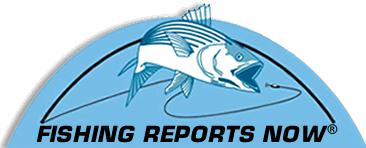New Jersey Freshwater Fishing Report 12-2-15
<b>NEW YORK</b>
<b>Salmon River and Western N.Y. Rivers</b>
Salmon River’s conditions were typical of late fall or early winter for steelhead fishing, said Jay Peck from <b>Jay Peck Guide Service</b>. The water temperature fluctuated up and down, depending on whether days were warmer or colder. However, the fluctuation might’ve been more than usual. The river sometimes fluctuated 4 to 6 degrees in a day, and a 3-degree change in a day “is a lot,” he said. Currently, when the river is warmer on a day, steelheading is better. When it’s colder, it’s slower. Fishing in afternoons, when the water’s warmer than earlier in the day, is best. The water recently ranged maybe 36 degrees to 44 or 45. That’s a large range. The river ran at 335 cubic feet per second, and rain was supposed to fall a couple of days this week, and maybe that would raise the level. Steelheading on the lower river seemed to improve in the last week. Anglers could expect to hook a steelhead or two there, even on streamer flies. Fishing streamers, like Intruders, was surprisingly productive for the time of year. Sometimes the fish can be keyed in on salmon eggs from the salmon spawn still this time of year, reluctant to grab streamers. Jay down-sized the streamers to size 6 from, say, 2, because that seemed to hook the fish better. The steelheads seemed to peck at the flies, instead of crushing them to kill them. Fishing egg flies was winding down for the year, and not a lot of salmon eggs were in the river this year, because fewer salmon were. Salmon spawn in the river earlier in fall. The current migration of steelheads into the river seemed about normal, though. Nymph flies also began to catch the steelheads, and the season was early for that. On the upper river, steelheading was good when the water was warmer, and tough when the temp was lower. Trips might have a late breakfast and wait for the water to warm in the day before fishing. But Jay was mostly fishing for the big brown on other tributaries of Lake Ontario farther west in New York, around Rochester, like Oak Orchard River. He takes advantage of that angling while it’s best, and those waters will freeze in winter, preventing fishing. Salmon River never completely freezes, and steelheading there lasts all winter. The brown trout rivers and creeks ran low, making the fishing tougher. Still, three or four of the big fish could be landed in a day, like before. Jay expected water to be released from the canal that would raise the rivers and creeks, and that didn’t happen last week. That would probably happen this week, he thought. The week’s rain could also raise the waters, and any slug of water would cause more browns to migrate into the rivers and creeks. That would pick up the angling. The browns migrate to the rivers and creeks from the lake to spawn in fall, and some already spawned that migrated in, depending on location. The trout previously averaged 8 pounds, and now averaged 5, because they lost weight after spawning. After they spawn, they actively seek food, unlike when they’re not really looking to eat when spawning. That’s good for fishing. Egg flies landed the browns, but the trout that spawned, like in the Oak Orchard, began to hold in deeper water and forage on creek chubs and shads. That made them swipe streamer flies. The streamer fishing was beginning, and Jay’s trips recently cast sizes 4 to 6 “in any color, as long as it’s white,” he said! That imitated the baitfish well. The trout grow large because they summer in the lake. After spawning, they’ll remain in the rivers and creeks throughout winter and early spring, because forage then is more abundant there than in the lake. Though the steelheads migrate to tributaries like Salmon River in fall, they won’t spawn in the tribs until spring. They’ll winter in the tributaries for the more abundant forage. The steelheads, like the browns, will return to the lake for summer. Jay specializes in fly-fishing and catch-and-release, and books trips that fish with conventional tackle with his other guides.
<b>NEW JERSEY</b>
<b>North Jersey</b>
Seven hybrids striped bass to 7 pounds were boated from Lake Hopatcong on Friday on a trip with clients, Capt. Dave Vollenweider from <b>Live to Fish Guide Service</b> wrote in an email. “Incredibly fun when the rod rips over and you think it’s going to break …” he wrote. Hybrids are strong fighters, and the fish were hooked in 32 feet of water, and the fishing was tough at first. On arrival, another boat fished on Dave’s numbers, and he didn’t want to sidle up close and disturb the trip. But hybrids were bailed one after another on the other vessel. Finally, on Dave’s trip, a flurry of bites gave up the seven stripers. That was probably his final trip on Hopatcong for the year, because the boat launch and marina were closing for the season. He’ll move on to Greenwood Lake and Monksville Reservoir to fish. The email didn’t mention species that might be caught. But walleyes, muskies and crappies seem possible.
Trout streams still ran a little low, but this week’s rains should raise them, said Brian from <b>Ramsey Outdoor</b> in Succasunna. Smaller flies like midges or maybe, on a warm day, small blue-winged olives were types of patterns fished now. Any other hatches weren’t really known about this late in the year. Those will be about the only bugs until other hatches late in winter, like small, black stoneflies in late February or early March. The <a href="http://www.njfishandwildlife.com/trtinfo_winter.htm" target="_blank">winter trout stocking</a> took place last week that mostly stocks the fish in lakes, unlike the fall stocking that includes maybe half streams and half lakes. Perch were angled at Lake Muconetong and probably elsewhere, like at Lake Hopatcong. Walleyes were jigged deep down in the water at Hopatcong. Nothing was heard about Delaware River. If anglers fished for anything there, they probably cast for smallmouth bass. Crawfish or hellgrammite imitations are usually fished for them. In saltwater, surf anglers still beached plenty of striped bass and some blues.
Northern pike were fought from Passaic River, said Joe from <b>Fairfield Fishing Tackle</b> in Pine Brook. The river’s flow was below average, but fine for fishing, including navigable for kayakers, who caught the pike well. Most anglers toss big, No. 5 or 6 Blue Fox Vibrax Spinners to the fish. But some buy big Mepps musky spinners or Husky Tail spinners for the fishing. Walleyes were jigged at Greenwood Lake on blade baits. A few customers angled trout from the Pequest, Ramapo and Rockaway rivers. Nothing notable like big numbers was heard about. Lots of meal worms were sold for trout. Salmon eggs were also bought. Those baits probably caught.
<b>South Jersey</b>
Trout anglers lit into the better-sized rainbow trout from the fall’s stocking from the South Branch of the Raritan River at Clinton to the junction of the north and south branches and somewhat in the main stem downstream from there, said Braden from <b>Efinger Sporting Goods</b> in Bound Brook. Now that autumn’s leaves began clearing from the water, the trouters fished silver Mepps spinners that fouled in the leaves previously. The anglers also fished orange PowerBait. Trout-fishing customers who keep quiet about details bought small, sizes 16 and 18, dark nymphs. Braden assumed they fished the upper South Branch, because that’s where the anglers usually frequent. Trout streams ran low and clear, and probably spiked higher because of this week’s rain. Walleyes to 26 inches were jigged at Swartswood Lake off some of the points where water was deep. Chain pickerel were wrestled from Delaware and Raritan Canal on live shiners, a typical fishery in late fall.
Lake Shenandoah and a couple of other lakes in the area were included in the winter trout stocking, said Dennis from <b>Murphy’s Hook House</b> in Toms River. Customers sometimes headed out for them, but none reported results. Fishing for trout from the fall stocking, in the Toms, Metedeconk and Manasquan rivers, was also an option. The waters were somewhat low, but otherwise, fall’s temperatures were probably conducive to the angling. Fishing for chain pickerel and crappies at lakes is absolutely an option this season. They bite in cooler weather. Baits stocked include the selection for trout, including salmon eggs, PowerBaits and trout worms. Nightcrawlers and killies are also on hand. Murphy’s, located on Route 37, also owns <b>Go Fish Bait & Tackle</b> on Fischer Boulevard in Toms River.
Catches of largemouth bass from lakes were heard about a little, said Steve from <b>Blackwater Sports Center</b> in Vineland. A largemouth tournament was held at Davis Mill Pond last weekend, and caught. Rainbow Lake gave up some big largemouths. The bass at lakes swam shallow, and anglers pitched shallow-running crank baits, spinner baits and chatters baits to them. Chain pickerel fishing was just okay at lakes in relatively warm weather. Pickerel can thrive in colder conditions. Crappie fishing was fair at lakes, on small minnows and on grubs. In saltwater, striped bass finally migrated to the ocean off South Jersey. Some good catches were boated. Nothing was really heard about stripers from Delaware Bay. Just a lot of complaining.


